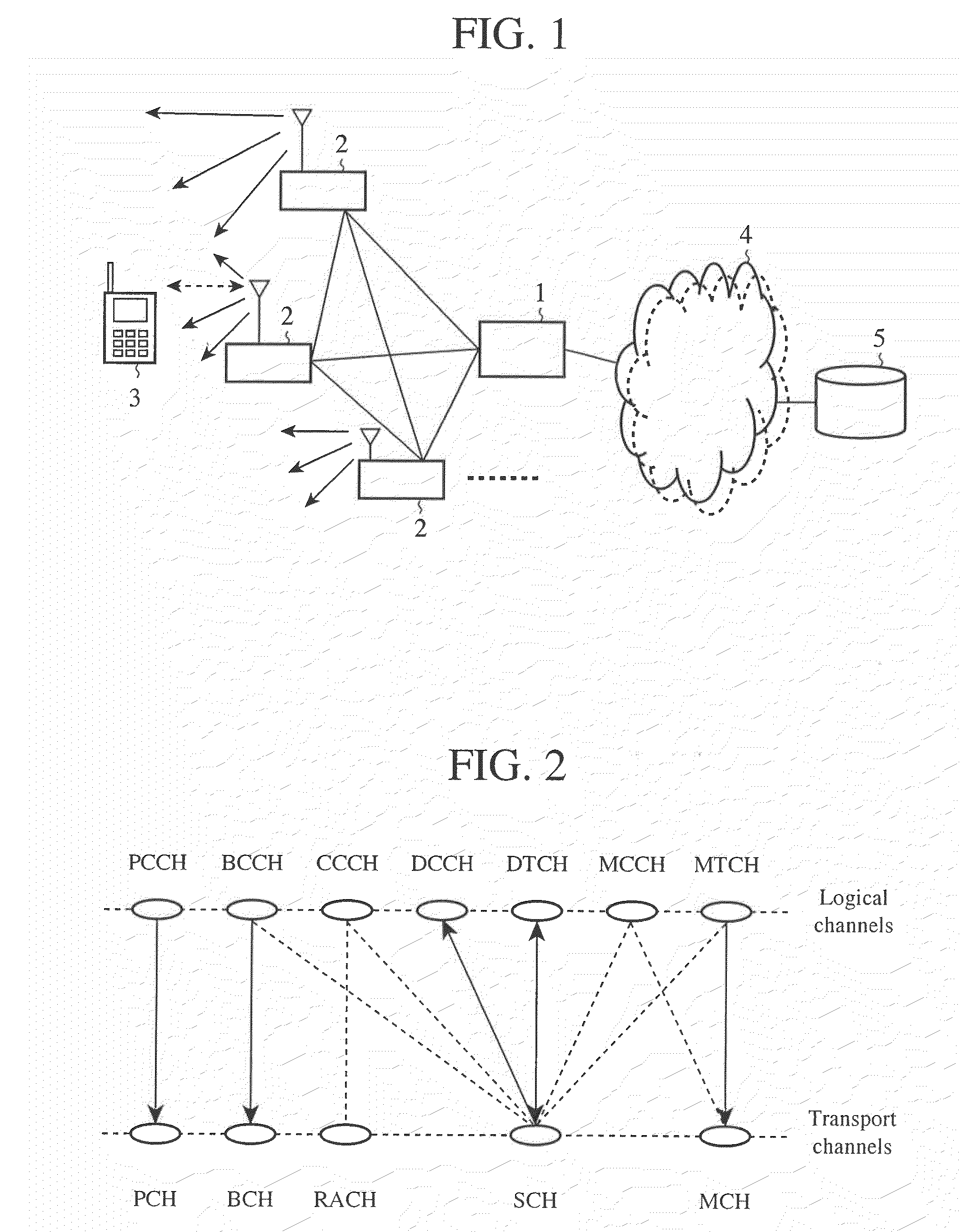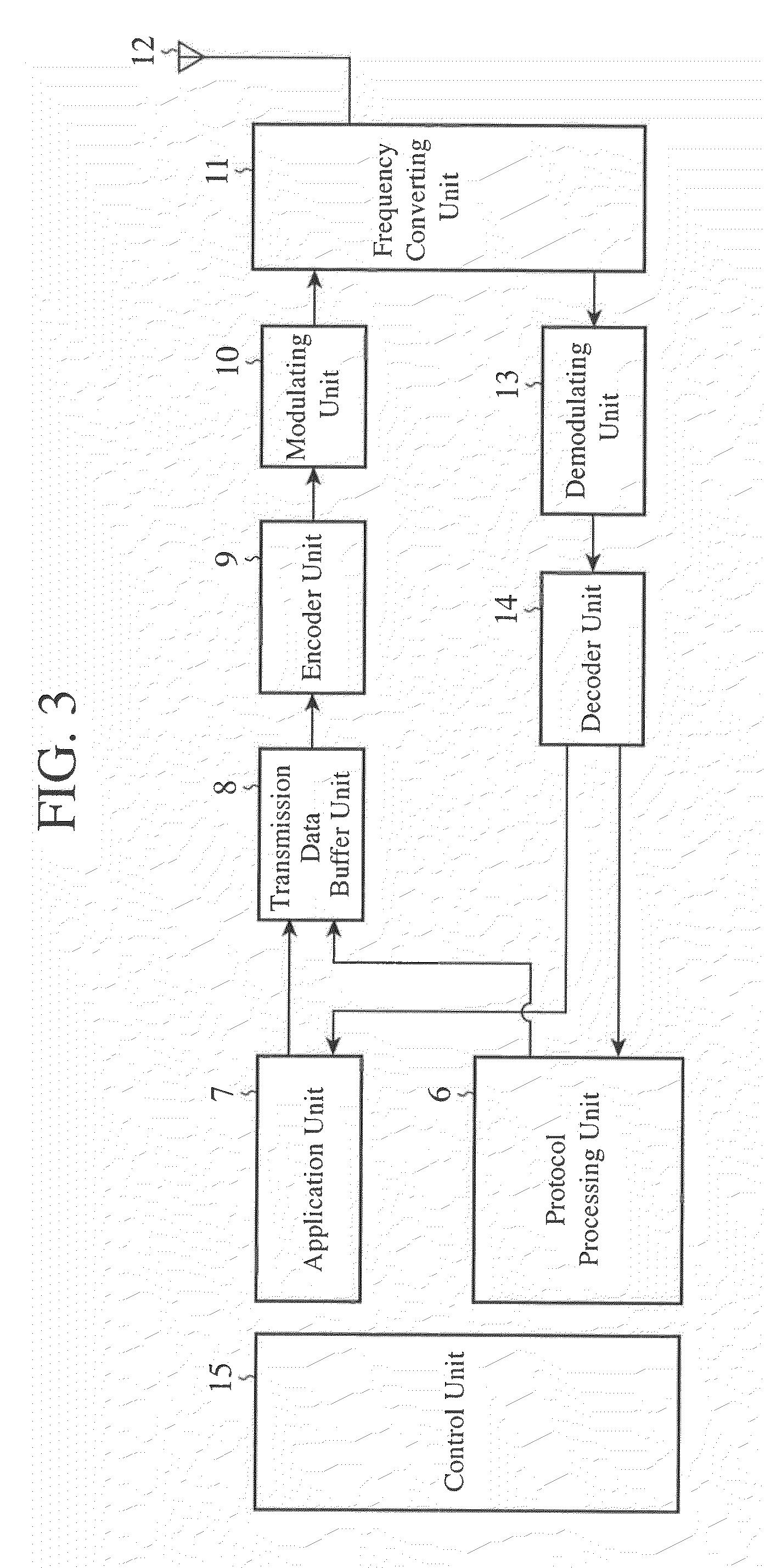Communication method, base station, communication system, and mobile terminal
a communication system and mobile terminal technology, applied in the field of communication methods, base stations, communication systems, mobile terminals, can solve the problems of system load, control signal amount and frequency, etc., and achieve the effects of reducing system throughput, reducing useless allocation of resources, and reducing the amount of resources
- Summary
- Abstract
- Description
- Claims
- Application Information
AI Technical Summary
Benefits of technology
Problems solved by technology
Method used
Image
Examples
embodiment 1
[0043]FIG. 1 is an explanatory drawing showing the structure of a mobile communication system which complies with LTE. In FIG. 1, an aGW 1 performs transmission and reception of control data and user data with a plurality of base stations (eNB) 2, and a base station 2 transmits and receives data to and from a plurality of mobile terminals (UE) 3. Between a base station 2 and a mobile terminal 3, broadcast information, information used for processing a call, individual control data, individual user data, control data for E-MBMS, user data, and so on are transmitted. It has also been studied that base stations 2 communicate with each other. A base station 2 has uplink and downlink schedulers. These schedulers of a base station 2 enable transmission and reception of data between the base station 2 and each mobile terminal 3, and carry out scheduling for improvements in the throughput of each mobile terminal 3 and that of the whole mobile communication system.
[0044]A E-MBMS provides a b...
embodiment 2
[0063]In above-mentioned Embodiment 1, the method of disposing a channel exclusive for silent period for transmission of silent data, and allocating the data to be transmitted during a silent state to the channel exclusive for silent period is disclosed. In contrast, in this Embodiment 2, a method of allocating data to be transmitted during a silent state to a part of resources on a frequency axis which was allocated during a talk spurt without disposing any channel exclusive for silent period will be disclosed.
[0064]FIG. 10 is an explanatory drawing showing resource allocation for a downlink. The method of allocating a part of resources on the frequency axis, which was allocated during a talk spurt, during a silent state for a downlink is shown in FIG. 10. Each open box with a black frame shows a resource block (RB) which is allocated in dynamic scheduling, and each diagonally shaded box shows a resource to which a VoIP service of a certain mobile terminal (for example, the UE-A or...
embodiment 3
[0071]In the nonpatent reference 5, the use of frequency hopping in uplink (UL, Uplink) data transmission for which persistent scheduling is carried out is studied. However, nothing about a concrete hopping method of implementing frequency hopping is disclosed in the nonpatent reference 5. Therefore, nothing about a method of controlling frequency hopping is disclosed in the nonpatent reference 5. In this Embodiment 3, a concrete hopping method of implementing frequency hopping will be explained. In order to use frequency hopping in transmission of uplink data for which persistent scheduling is performed, it is preferable that a mobile terminal (UE) and a base station (eNB, eNodeB) share control of the frequency hopping. In this case, a further advantage can be provided. Unless the mobile terminal and the base station share control of the frequency hopping, the base station has to allocate uplink radio resources to the mobile terminal every time when frequency hopping is carried out...
PUM
 Login to View More
Login to View More Abstract
Description
Claims
Application Information
 Login to View More
Login to View More - R&D
- Intellectual Property
- Life Sciences
- Materials
- Tech Scout
- Unparalleled Data Quality
- Higher Quality Content
- 60% Fewer Hallucinations
Browse by: Latest US Patents, China's latest patents, Technical Efficacy Thesaurus, Application Domain, Technology Topic, Popular Technical Reports.
© 2025 PatSnap. All rights reserved.Legal|Privacy policy|Modern Slavery Act Transparency Statement|Sitemap|About US| Contact US: help@patsnap.com



